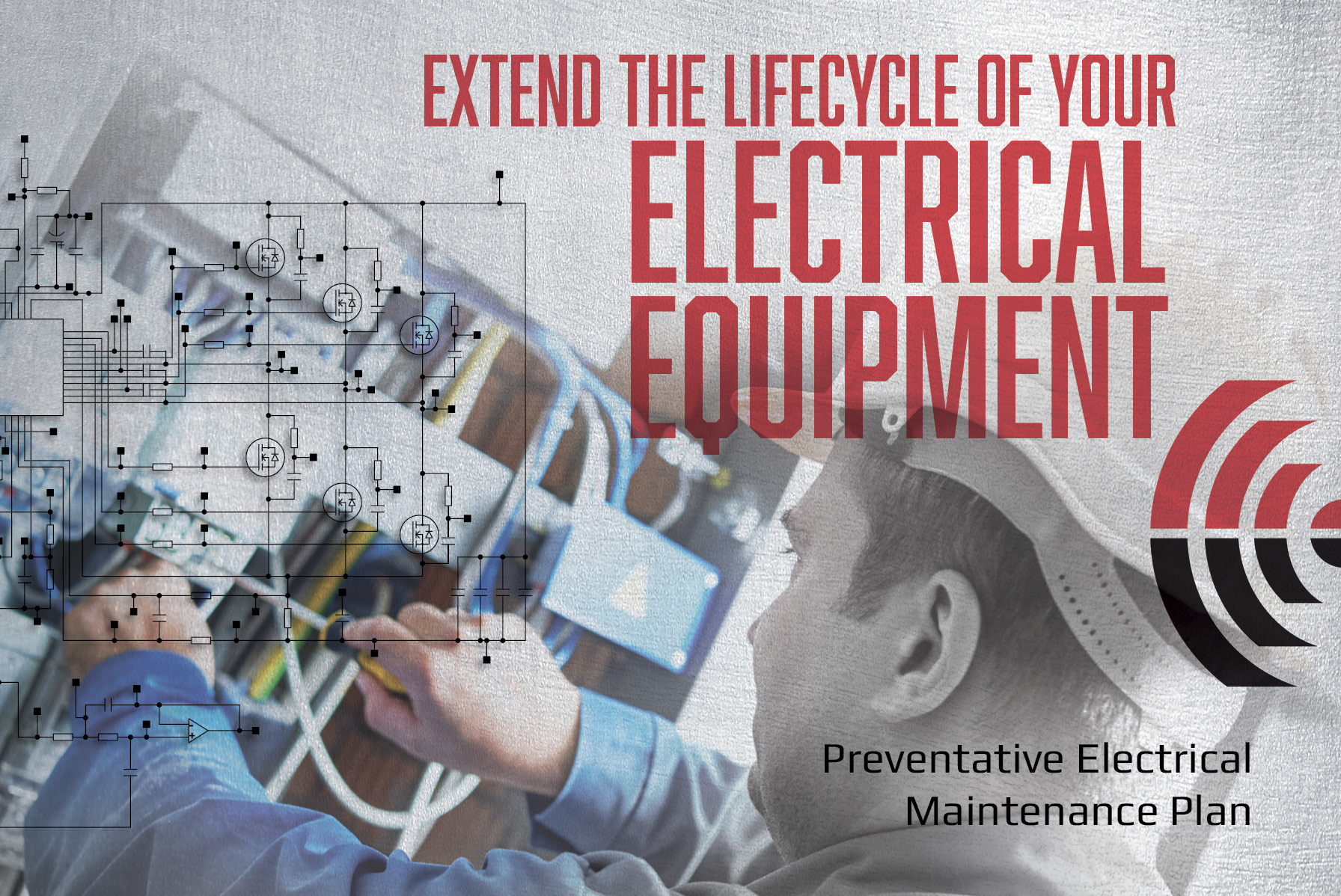All electrical equipment has a life cycle; leave it for long enough, and it will break down due to environmental impacts, loose connections, or wear and tear. Many electrical equipment failures stem from a buildup of moisture, dirt, or lint inside of electrical components. Moisture condensation can cause oxidation and connection failure, while dust and dirt deposits can lead to heating and increased wear.
Why electrical maintenance is important
Electrical equipment plays a quiet but essential role for most industrial businesses. Equipment failure during a manufacturing shift or in a hospital setting can cause catastrophic business interruption and can lead to a costly loss of product.
Without a corrective maintenance approach, equipment parts are already likely to have a diminished life cycle because of increased wear and tear. On top of that, unexpected electrical failures can pose a safety risk. With the right electrical maintenance, however, you can extend the life of your industrial equipment and minimize the chance of a catastrophic equipment failure at a critical moment.
What is the best way to maintain your commercial equipment?
One way that all businesses can prevent damage is to clean their equipment regularly and to maintain a dry environment if possible. Some companies hire in-house employees to maintain and fix their equipment, while others choose to hire a service company. Hiring a service company for maintenance helps companies to avoid the overhead of recruiting, hiring, and training extra staff members, an extra challenge in the midst of a staffing shortage.
How often should you maintain electrical equipment?
Though recommendations vary by types of equipment, generally all electrical equipment should be inspected and maintained at least once per year. Factors that impact how often you should inspect your equipment include:
- how critical the equipment is to your operation
- the condition of the environment the equipment is operating in
- lead times and availability of spare components if needed
- the actual cost per hour of downtime if equipment is not running
What are the types of electrical maintenance?
An alternative to corrective maintenance is preventative maintenance, in which technicians service equipment on a set interval to ensure that the equipment is clean, dry, and operating with minimal corrosion and friction. Technicians inspect, exercise, and test the equipment upon servicing. Electrical parts such as motors, gear boxes, transformers, and conveyors may need to be tuned up or on occasion replaced. When choosing an electrical service company, look for one whose technicians are OSHA/MSHA-certified and who are factory-trained in your equipment.
Here are several types of electrical maintenance that can keep your electrical equipment running smoothly with minimal failures:
Vibration Analysis
Vibration analysis is a process that measures vibration waves in a component, machinery, or structure to look for abnormalities. The diagnostic gives clues to potential issues including misalignment or imbalance. Different types of sensors such as a piezoelectric (PZT) sensor can be used to collect the vibration data. Collecting and logging vibration data over time allows service technicians to establish a baseline and know the condition of the machinery. Studies have shown that vibration analysis can provide early warnings of impending machine failure, giving staff time to schedule required repairs and acquire needed parts.
Infrared Inspection
Infrared thermography is a preventative process to detect unusual heat signatures that can be a sign of impending mechanical failure from friction or other issues. Infrared inspection detects mechanical issues before they are apparent to equipment operators, and in many cases a repair can be completed before any damage occurs.
Laser Alignment
More than half of all machinery failure is due to some degree of misalignment. When this happens, excessive vibration and high load bearings can cause mechanical issues and connecting shafts need to be realigned to correct the issue. Laser alignment is a quicker, more precise repair alternative than other methods such as a straight edge or dial indicator. Laser alignment tools consist of sensors, bracket for mounting to the part, extension rods, extension chains, and a display to view the data in real-time.
Power Factor Correction
Power Factor Correction is a method that aims to improve power quality by reducing the load on the reactive power component. The technique reduces current and improves efficiency in the component.
From commercial and industrial motors to conveyors and generators, Brehob Electric provides the electrical systems to keep your business running without mechanical interruptions. Brehob offers cutting-edge vibration analysis and infrared thermography to find issues before they become major problems, plus dynamic balancing, cooling-tower repair, conveyor automation, ground testing and much more.
Brehob is a top electrical service provider in the Indianapolis area, offering 24/7/365 on-call repair when a breakdown occurs. Avoid the stress and downtime of an equipment failure with a preventative electrical maintenance plan.
